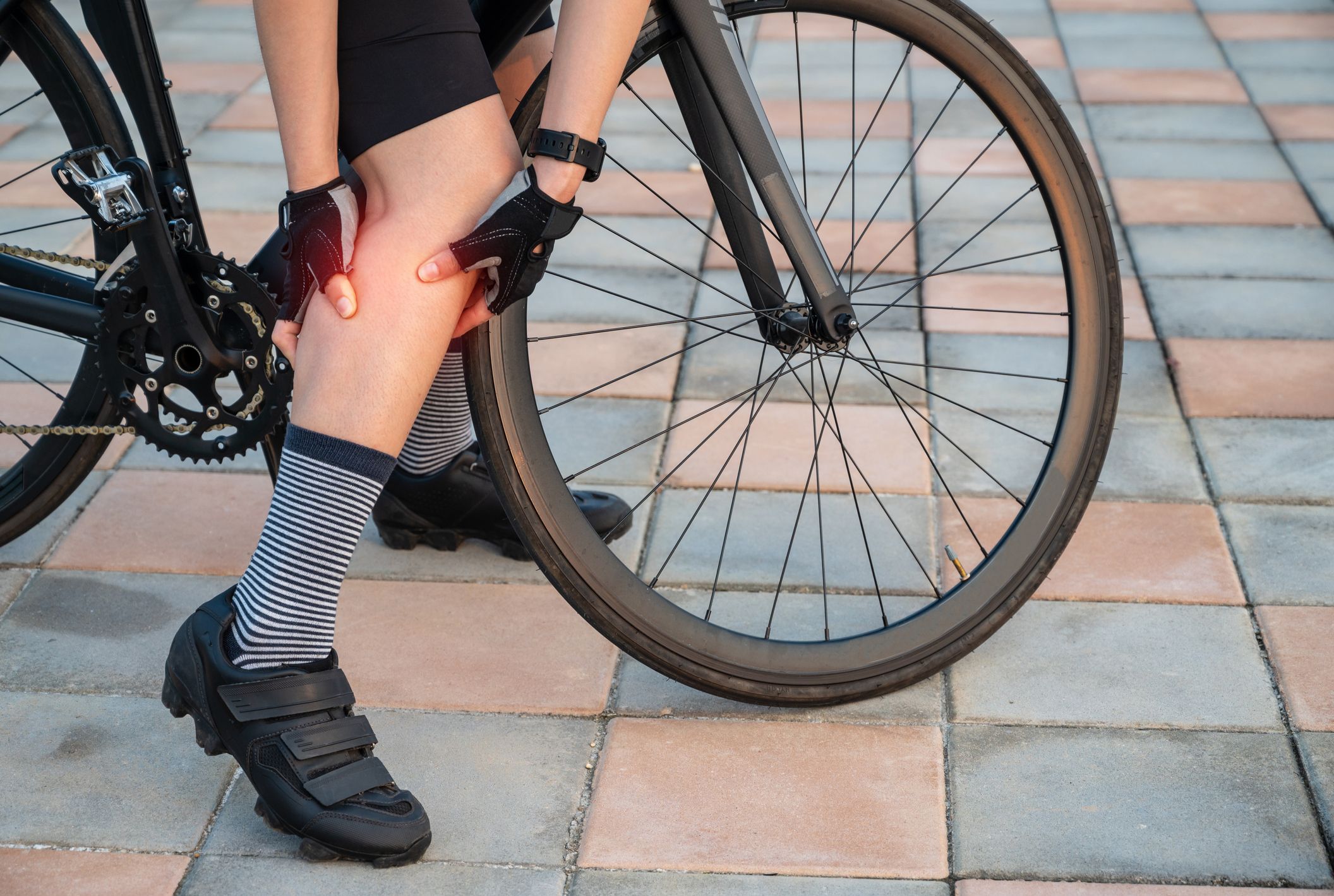How To Stop Leg Cramps Ruining Your Ride
Leg cramps can ruin a ride - here's how to prevent them, and cure them if they do strike (to the best of science's knowledge!)
Some interesting news in the world of exercise-associated muscle cramps: Turns out, eating bananas and drinking water or Powerade to prevent or stop leg cramps, may not be the reliable solutions athletes once thought they were. “Muscle cramps are more complicated than people think,” Kevin Miller, Ph.D., professor of health and human performance at Texas State University in San Marcos, Texas tells Bicycling. “A lot of researchers have focused on dehydration or fatigue, but just like there are a 1 000 recipes for pasta sauces there are 1 000 recipes for how athletes cramp.”After publishing a 2021 review of the muscle cramp literature in The Journal of Athletic Training, Miller outlined the top causes. “My big three factors are dehydration, fatigue, and not getting a good night’s sleep,” he says. “The tricky part is where the science is right now. We don’t know how those things interplay.”While researchers still work out the details on how to prevent leg cramps, they have enough information to explain why eating bananas likely won’t stop or cure cramps, but pickle juice might. So, here’s the most current research about cycling and muscle cramps, including how to prevent and stop leg cramps.
What are muscle cramps?
Technically, exercise-associated muscle cramps feel like noticeable pain with rigid muscles, often described as a knot. The muscle sometimes twitches and then tightens. Almost instinctively, the athlete experiencing a cramp will stretch and massage the muscle to loosen the cramp.While cramps aren’t life-threatening (which is one reason there isn’t a lot of research about them, according to Miller), they can greatly inhibit an athlete’s performance. Just look back to the 2017 Tour de France as an example. During Stage 8, Lilian Calmejane suffered a calf cramp that threatened his ride. The good news though? He still went on to win that stage.
What causes them?
While no researcher has been able to definitively point to one reliable cause of muscle cramps, they seem to occur when “you’re doing work that your body is not ready for or pushing your muscles beyond what you’ve been training to do,” Miller says.The research also points to dehydration, muscle fatigue, and lack of sleep, as the most likely contributors to a muscle cramp, although, again, no one is sure how those three things create the cramp at any one time.Also, in addition to not being trained enough to handle a tough workout, avoiding a solid warmup could also contribute to muscle cramps.
How can you prevent them?
If being tired and thirsty with cold, untrained muscles leads to leg cramps, then the best way to prevent leg cramps is to do what you typically do to get ready for any ride: Get enough sleep, warm up before going all out, and drink plenty of water.“There are major benefits to a proper dynamic warmup,” Miller says, “but pre-event stretching is not a preventative for cramping and flexibility doesn’t seem to be predictive.”Similarly, don’t ask your muscles to do something they aren’t ready to handle. That means gradually increasing your mileage or intensity, rather than jumping into super hard, long workouts you haven’t built up to tackling.
How do you stop leg cramps?
“The fastest, safest, and most effective treatment for a cramp is gentle stretching,” Miller says.Miller breaks down some of the best ways to stop a leg cramp by stretching:
- Calf cramps can often be relieved while riding by standing on your bike and dropping your heel at the bottom of the pedal stroke so you feel the stretch at the bottom of the leg.
- For cramps in the front of your thigh (quadriceps) unclip your foot and raise your heel toward your buttocks, bending your knee. Gently pull on your foot with the same-side hand. Just be careful: In some cases, this may lead to cramps in your hamstrings.
- For hamstring cramps (the backs of your thighs), stretch it out by straightening the leg with the cramp, popping the toes, and sending the hips back as you keep the cramped leg straight and bend the other leg.
What about nutrition for preventing and stopping them?
While it’s possible that dehydration can lead to muscle cramps and electrolytes play an important role in helping you stay hydrated, most people get more than enough salt and even potassium in their diets. Sweaty cyclists may be an exception to that, so it’s especially important to get these electrolytes if you perspire heavily.Potassium-rich foods, such as bananas, can certainly help keep your electrolytes in balance, which is important to fight muscular fatigue. But that doesn’t mean it’ll stop you from experiencing leg cramps.
The bottom line
READ MORE ON: cramp prevention cramps fitness wellness


